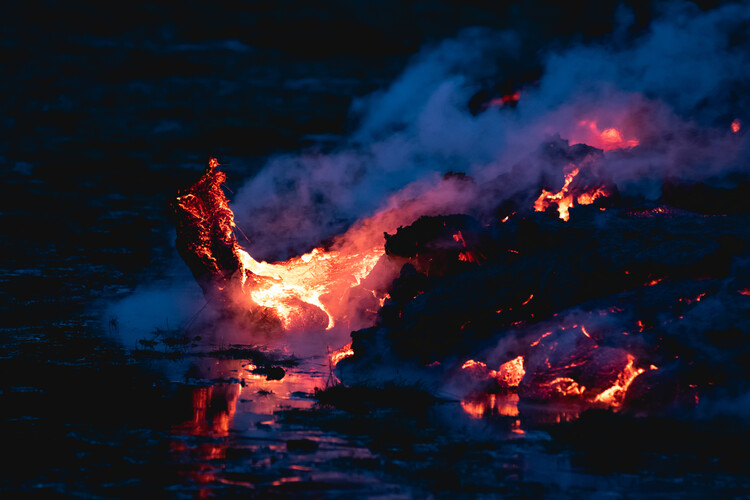
Volcano erupts in Iceland, with 900-metre-long fissure spewing lava, following 5.2-magnitude earthquake earlier this week
By
A volcanic eruption on Iceland’s Reykjanes peninsula – around 19km from the capital – began yesterday after a 5.2-magnitude earthquake hit near Reykjavík, the country’s capital, on Sunday. After a series of 630 small earthquakes, and a larger 5.2-magnitude quake, officials were led to believe a volcanic eruption was on its way – and it eventually arrived.
A fissure measuring 900 metres in length (around half a mile) opened up by the Litli Hrútur mountain in Grindavik, spewing lava and ash which release toxic fumes into the atmosphere.

‘The eruption is taking place in a small depression just north of Litli Hrútur, from which smoke is escaping in a north-westerly direction,” said Icelandic Meteorological Office (ICO).
Related articles

According to the ICO, sulfur pollution is expected to occur in the region for 48 hours after the initial volcanic eruption in Iceland – including in the country’s capital city, Reykjavik.
The eruption occurred in an uninhabited area – but people are warned to not flock to the area by the National Police Commissioner to view the volcano, with trails to access it now closed.
On Tuesday, footage showed that the volcanic fissure had shortened, and lava flow had slowed, according to Professor of Geophysics at the University of Iceland, Magnus Tumi Gudmundsson.
Iceland’s volcanic history
Iceland – which on average, has a volcano erupt every five years – is one of the most active volcanic regions on the planet, home to over thirty active volcanoes. The most recent volcanic eruption in Iceland was northwest to the sites of the 2021 and 2022 eruptions in Fagradalsfjall, where two volcanic eruptions occurred in the space of ten months.

In recent years, the country has also seen a huge eruption with a widespread impact – the Eyjafjallajökull eruption of 2010 which forced all air traffic to be grounded over Europe due to ash in the air.
And a study by the University of Leeds in 2015 found that the lava flows caused by the 2014 Bárðarbunga volcano eruption led to the daily release of up to 120,000 tonnes of toxic sulphur dioxide gas which can cause respiratory issues and acid rain – a staggering three times as much as all European industry combined.
The country’s location on the Mid-Atlantic Ridge in the North Atlantic Ocean – where the North American and Eurasian plates are moving apart – means that the Earth’s crust becomes fractured in these areas, allowing magma to rise to the surface to cause lava and ash eruptions.




